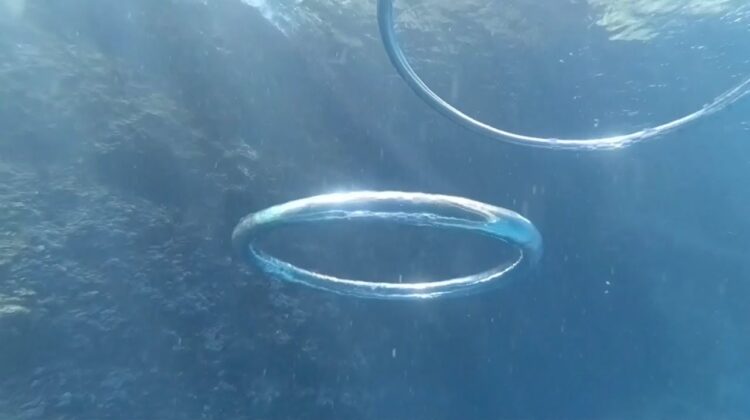
When two bubble rings collide, a fascinating phenomenon occurs known as reconnection. This occurs when the two rings merge and exchange vorticity, leading to the creation of a new ring with different properties than the original two.
A vortex ring is a donut-shaped ring of fluid that travels through a medium, such as air or water. When two vortex rings collide, their vorticities – or swirling movements – interact with one another, leading to the exchange of fluid and the creation of a new ring with altered properties.
Scientists have studied this phenomenon to gain a better understanding of fluid dynamics and turbulence. By analyzing the interaction of the vortex rings and the resulting reconnection, they can better understand how fluids move and behave in different environments.
One study published on ResearchGate, titled “Reconnection of Colliding Vortex Rings,” explored the reconnection process in detail. The researchers used numerical simulations to analyze the collision and reconnection of two vortex rings in various conditions.
They found that the reconnection process depended on the orientation of the vorticities and the initial conditions of the rings. When the vorticities were aligned in opposite directions, the reconnection process was more complex and led to the creation of multiple smaller rings. When the vorticities were aligned in the same direction, the reconnection process was simpler and led to the creation of a larger ring.
Understanding the reconnection of colliding vortex rings has important implications in various fields, including fluid dynamics, acoustics, and even astrophysics. By studying this phenomenon, scientists can gain a better understanding of how fluids behave in different environments and how they can be controlled or manipulated for various applications.
In conclusion, the collision and reconnection of vortex rings is a fascinating phenomenon with important implications in various fields. By studying the interaction of these rings, scientists can gain a better understanding of fluid dynamics and turbulence, leading to advancements in various industries and applications.

Leave a Reply